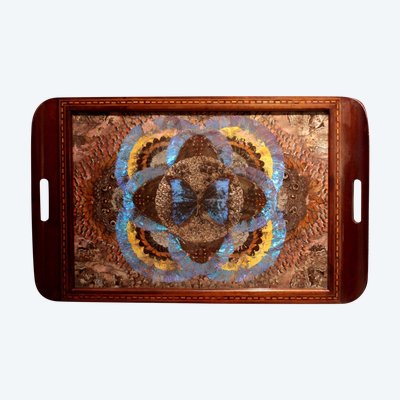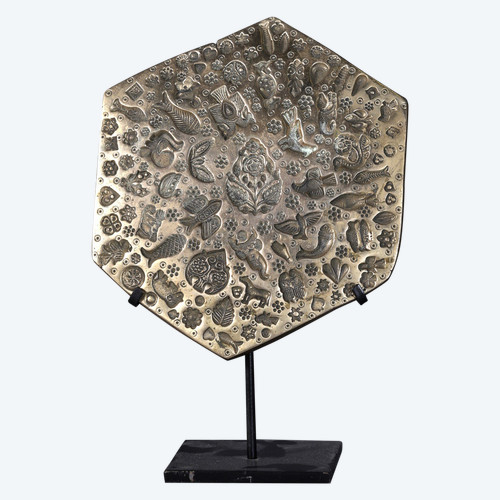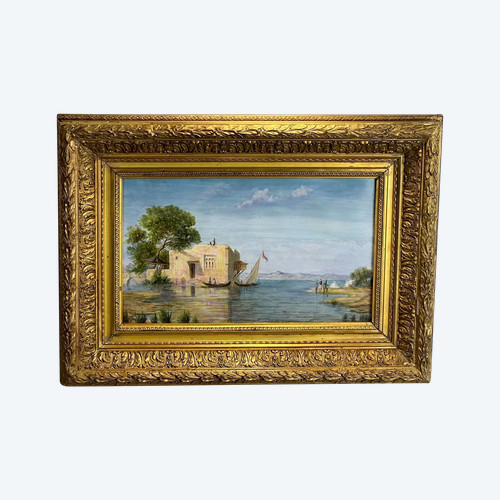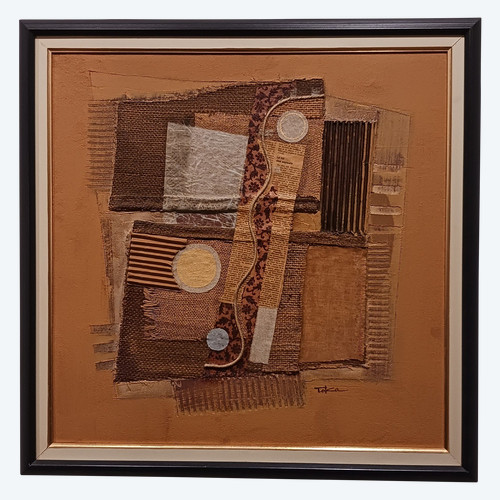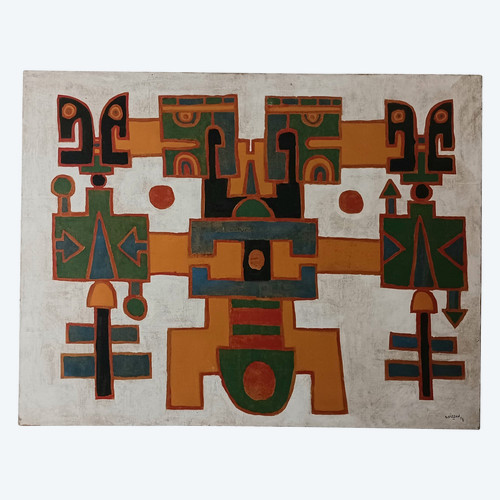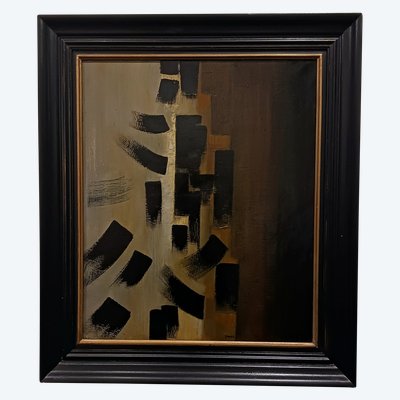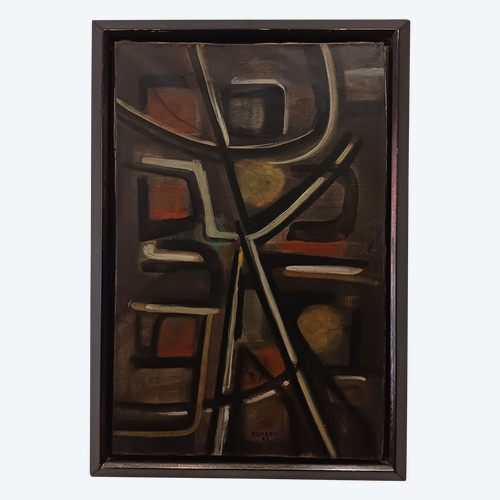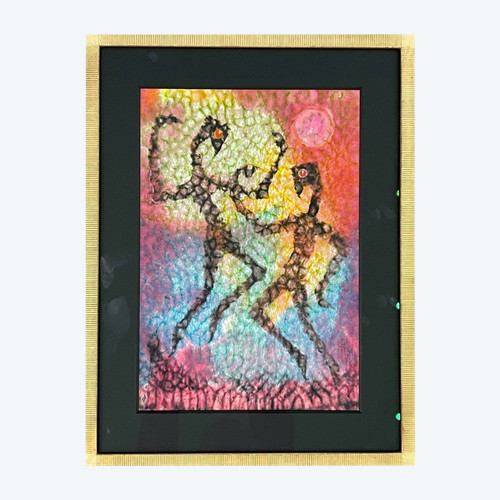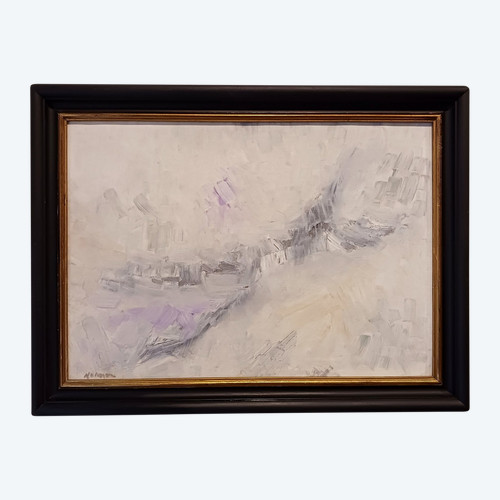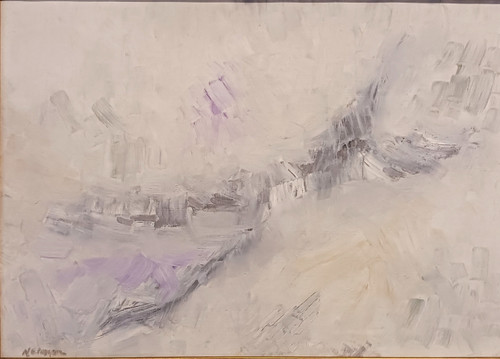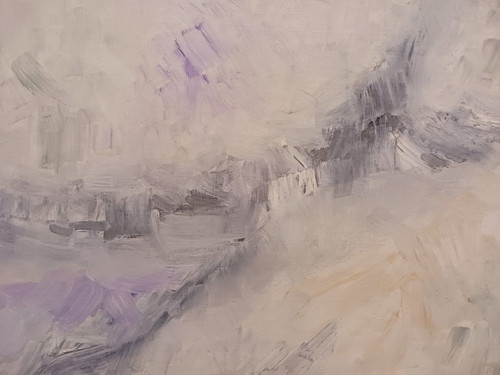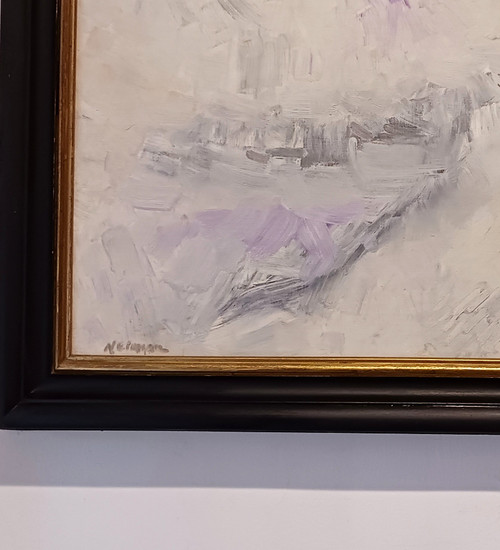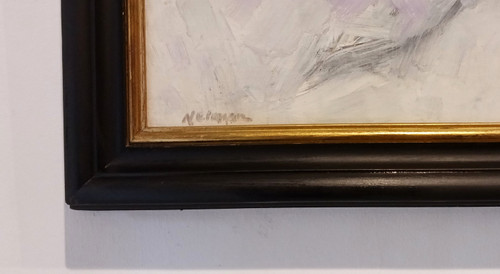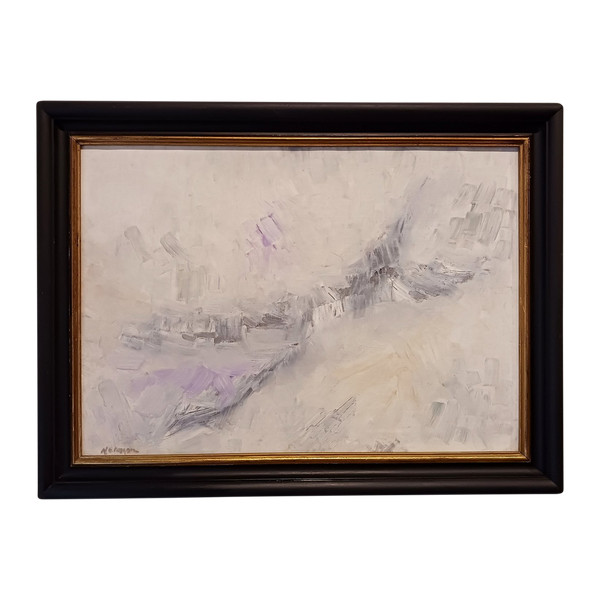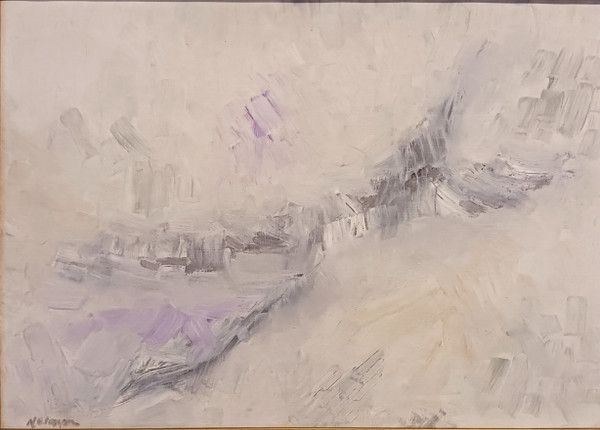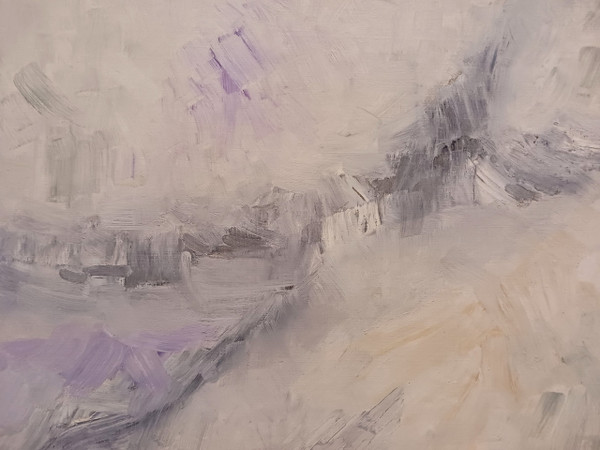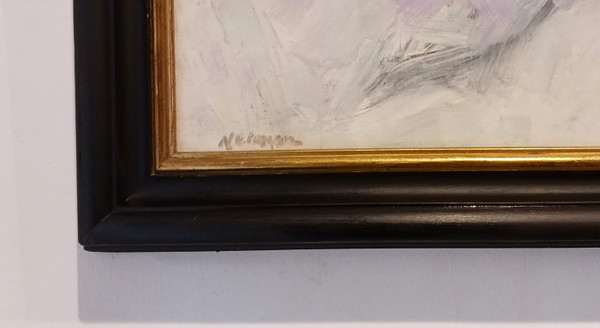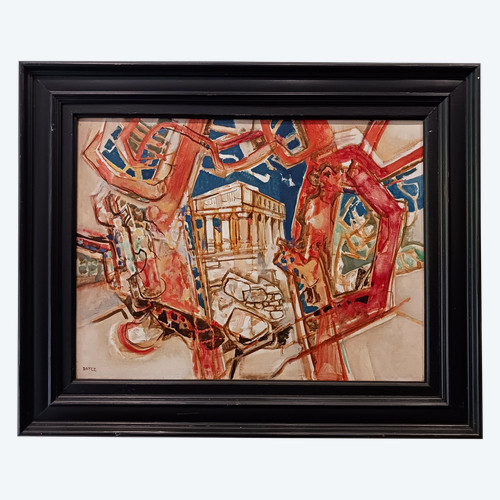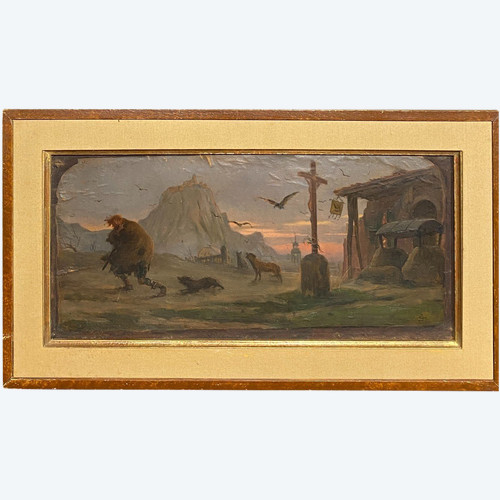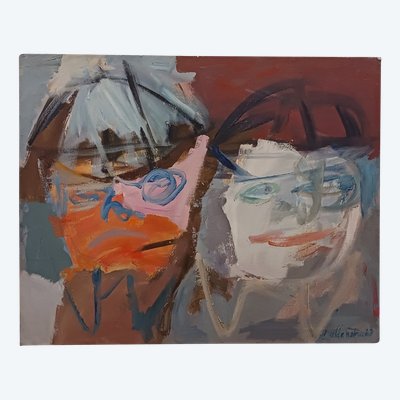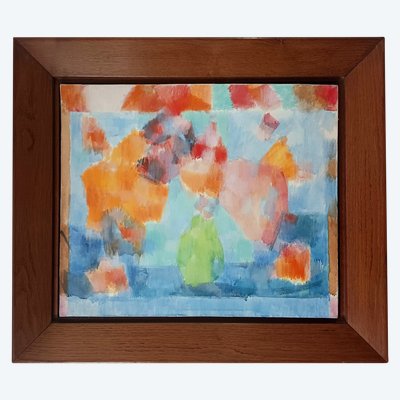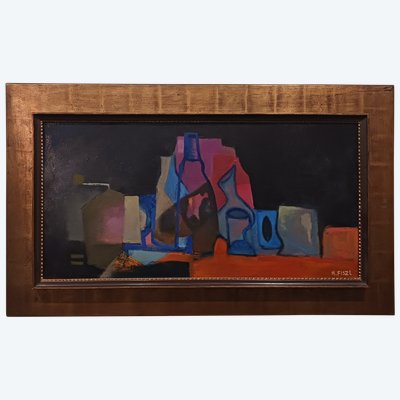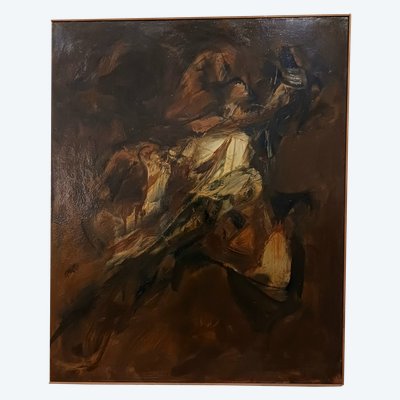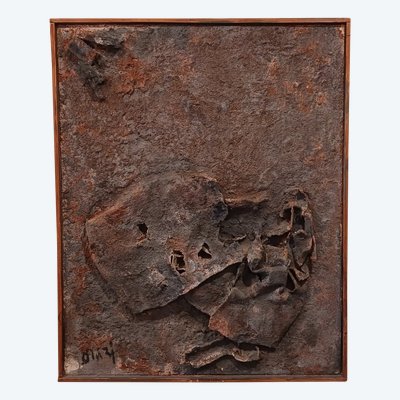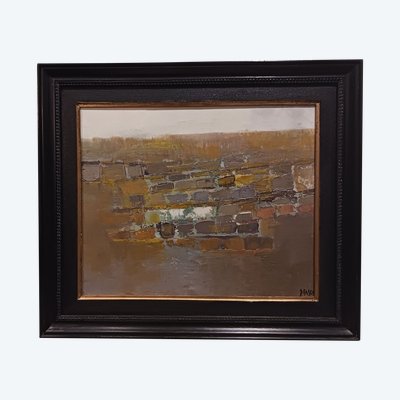This description has been translated and may not be completely accurate. Click here to see the original
OIL ON CANVAS CIRCA50 46X65CM
From 1949, he moved into a studio in Tel Aviv, and he studied with Yehezkel Streichman (1906-1993) and also with Avigdor Stematsky (1908-1989). He met Sioma Baram (1919-1980), Emmanuel Mané-Katz (1894-1962), Lea Nikel (1918-2005), Ofer Lellouche, and found most of them in Europe and notably in Paris, London or the Balearic Islands.
He is very close and will be throughout his life to artists he met at that time in Israel or, a little later, elsewhere, such as David Lan-Bar (1912-1987), Menashe Kadishman (1932-2015 ), Frank Krajcberg, the sculptor Yitzhak Danziger (1916-1977), polyexpressive artists like Arik Brauer (1927-) and Amos Kenan (1927-2009) his great friend.. he moved to Paris in 1954 to continue his studies in Decorative Arts.
he was the subject of personal exhibitions in London from 1955 (New Vision Center, Obelisk Gallery, Drian Gallery).
Between 1956 and 1959, (our painting) Yehuda Neiman painted in the vein of cloud painting and informal painting.
Its oils are predominantly black, gray, white and ocher.
Pierre RESTANY wrote, in 1957, about Neiman's painting that he was closer to the English school by seeking a "definition of space based on an original and subtle distribution of ambient light". He emphasizes in Neiman's painting "a constant desire for harmonic balance of tones and values, an elegance tempered with sobriety [...]" ("Lea Nikel, David Lan-Bar, Yehuda Neiman de la Jeune École de Paris", Blu Gallery, Cremona Nuova, Milan, 1958).
Georges Boudaille describes Neiman's painting from this period as "almost monochrome oils" showing "the birth and secret progression of an emotion": "a thrill that escapes the majority of us", but that Neiman " captures, […] tames […]” and “whose brush traces the modulations with the precision and delicacy and sometimes the bursts of a seismograph” (exhibition catalog, Hadassa Gallery, Tel-Aviv in 1964) .
Aline Dallier-Popper writes about him: "The artist often uses an almost monochromic gray contemporary with the immaterial blue of Yves Klein (our work)..... He also approaches inks in this sense, he creates collages (rayograms), prints around 1960, and his research on black will quickly lead him to photography. The use of monochrome will return in his photo transfers on canvas or metal surface.
Individual exhibitions
1955: Tel Aviv, Chemerinsky Gallery
1957: London, New Vision Center
1958: London, Obelisk Gallery; Milan, Blu Gallery; Rome, La Salita Gallery
1960: London, Drian Gallery
1963: Couper Gallery
1964: Tel Aviv, Hadassa Gallery
1965: Luxembourg, Luxembourg town Gallery
1967: Milan, Schwarz Gallery; Paris, Cazenave Gallery
1968: Kyoto, Yamada Gallery; Tokyo, Yoseido Gallery
1969: Brussels, Aspects Gallery; Tel Aviv, Mabat Gallery
1970: Buenos Aires, Center de Arte y Comunication; Buenos Aires, National Museum of Argentina; Essen, Thelen Gallery
1971: Cologne, Thelen Gallery; Cordoba, Modern Art Museum
1972: Paris, “Horses”, Samy Chalom Gallery
1974: Milan, Eros (Serigraphs)
1975: Milan, “Good to shoot”; Milan, Sirio (Jewelry)
1979: Paris, La Closerie des Lilas
1982: Paris, “Portraits”, J.&J. Donguy
1988: Paris, J.-P. Haïk Gallery
1989: Midgal Tefen, Open Museum; Formentera, Sa-Nostra
2001: Ibiza (Spain), Sala de Cultura Eivissa; Formentera (Spain), Sa-Nostra
Public collections
Fonds national d'art contemporain, Paris (France) Berkeley Museum, California (USA) Kunstverein, Düsseldorf (Germany) Museum of Modern Art, Haifa (Israel) Israel Museum, Jerusalem Museum of Modern Art , Rio de Janeiro (Brazil) moderna meseet, Stockholm (Sweden) Museum of Modern Art, Tel-Aviv (Israel) Museum of Modern Art, Bern (Switzerland) Tel-Aviv University: Museum of Modern Art in the city of paris Open Museum “Migdal Tefen”, Galilee..............
Ref: VHFQZ4PZUF
 Louis Majorelle Art Nouveau showcase
16.800 € EUR
Louis Majorelle Art Nouveau showcase
16.800 € EUR


